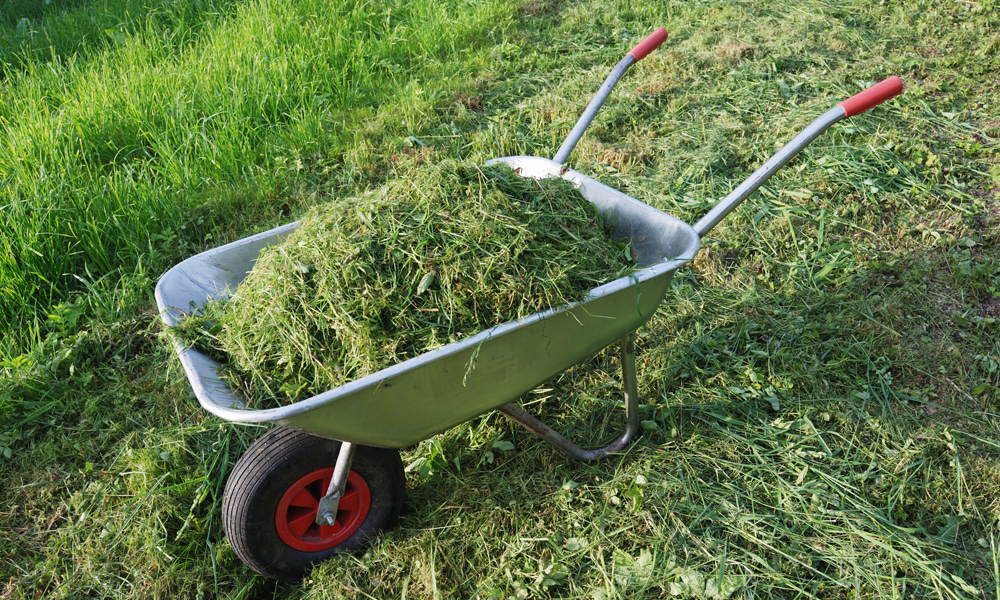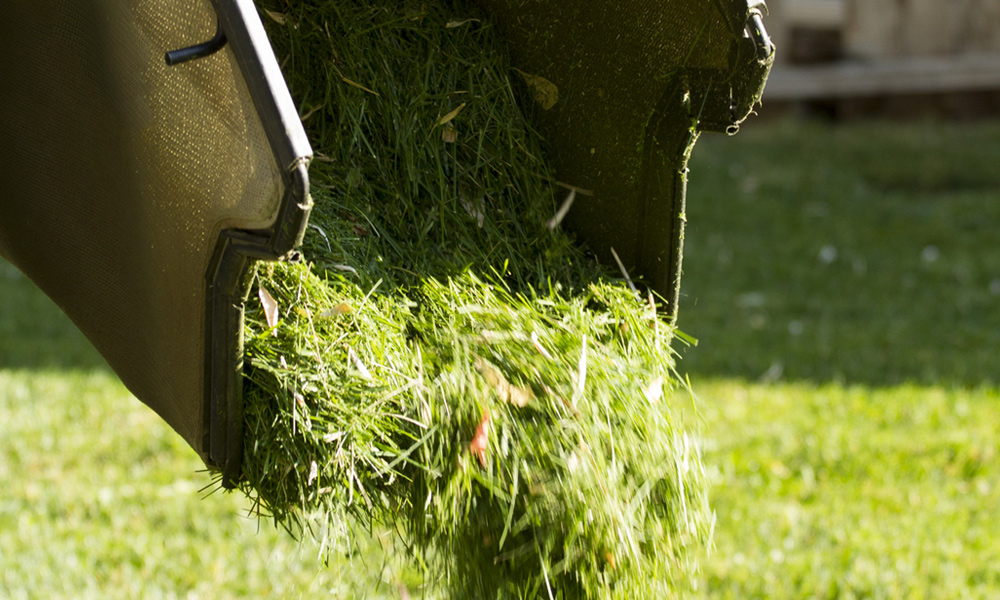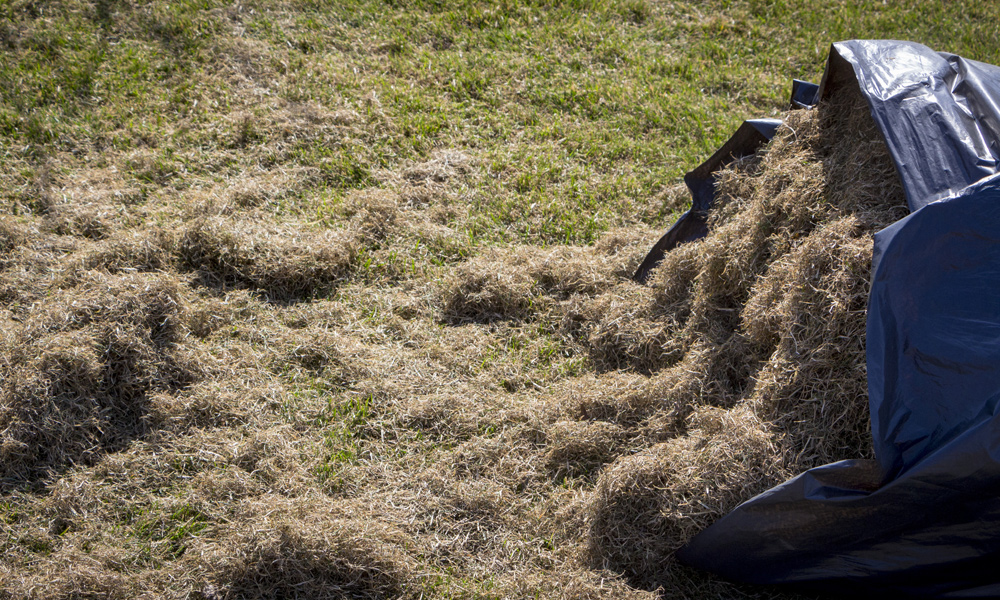Grasscycling – Recycling Grass Clippings to Improve Your Lawn
Lawn care is a surprisingly complex field, with a wide range of different commonly used methods for mowing your lawn and even more different ways to approach each of these methods. One of the best and most popular lawn care approaches currently, though, is grasscycling, the process of recycling your grass clippings from mowing, back into your lawn to benefit the health of your grass and keep things looking good and growing well.
What is Grasscycling?
Grasscycling is an environmentally friendly and easy to use method of looking after your lawn during the lawn mowing process. It is the natural recycling of grass as you mow your lawn by leaving the clippings produced by your mower on the lawn to decompose. Grass clippings are fast to decompose and return a wide range of valuable nutrients to the soil of your lawn, feeding your grass and helping it to grow healthily.
Grasscycling is a great way to look after your lawn, as it saves you the time and effort of bagging up and disposing of your grass clippings while helping to feed and nurture your grass naturally with valuable nutrients and organic matter for the soil of your garden. Grasscycling reduces the need for fertilizer for your lawn, in turn reducing the runoff of fertilizer into bodies of water and therefore significantly cutting down on the environmental impact of looking after your lawn.

Grasscycling is also a great way to cut down on the grass clippings that enter landfill sites. Every year, lawns produce approximately 300 lb of grass clippings per 1000 square feet of grass, according to recent research. That’s a tremendous amount of grass, and using this waste grass clipping material in your own lawn can be very beneficial.
What are the Benefits of Grasscycling?
Grasscycling has a range of great benefits for both your lawn and the environment when compared to regular processes of bagging up and disposing of grass clippings every time you mow your lawn. It’s worth considering as an approach for each of these beneficial areas, as each one is individually valuable to you and to the planet.
Plants need nutrients to grow, and they convert those nutrients to leaves and stems. That applies to grass too; the blades of grass that make up your lawn are directly built from nutrients drawn from the soil. That’s why fertilizing your lawn helps the grass to grow – you’re directly adding nutrients to the soil that the grass can use to grow. That means that when you cut the grass, all of those nutrients are still held in the clippings, and returning them to the soil can allow the grass to use those same nutrients again for healthy, strong growth.
Leaving grass clippings on your lawn once you’re done mowing allows those nutrients to go straight back into the grass as a natural fertilizer. They break down so fast that your lawn will look fresh and clean again very soon after mowing, so you don’t need to worry about making your lawn look messy, and the natural fertilization effects are valuable and worth taking advantage of.
Because grasscycling allows your grass clippings to act as a natural fertilizer, this process eliminates the need for buying and using fertilizer for your lawn, which has a significant impact on the environment. Fertilizers run off into the soil and away into nearby bodies of water, affecting plant growth in lakes, ponds and rivers and upsetting the delicate balance of these important ecosystems. Grasscycling prevents that from happening, keeping the environment near your lawn safe, healthy, and well balanced.
In addition to this, grasscycling reduces the effort that you need to put into mowing your lawn, as it means that you do not need to go to the trouble of bagging up your grass clippings and disposing of them later. It’s an easy process that cuts down on the effort required for mowing the grass and the expense of fertilizer, making grasscycling an easy choice for most people.
How to mow your Lawn for Grasscycling?
In order to get into grasscycling, you’re going to have to cut your lawn in the appropriate way to ensure that everything works at its best. As a general rule, it is best to mow your lawn when the grass is dry, so not immediately after rain, and ensure that your mower blades are kept nice and sharp for a clean cut. Cut the grass often enough that you never have to remove more than 1/3 of the height of your lawn, keeping the clippings short and easy to decompose.

Beyond the importance of keeping your clippings relatively short, there aren’t many things you need to consider when looking into grasscycling for your lawn. Almost any type of mower will work well for grasscycling, as you don’t need anything beyond sharp blades to produce clippings that are easy to break down.
Mulching and recycling mowers can boost the grasscycling performance of your mowing system, as they cut grass blades into smaller pieces and press them into the soil for faster decomposition, but they are far from necessary; as long as the clippings you produce are relatively small, you can easily grasscycle with any mower.
Mulching Mowers and Grasscycling
Many modern lawnmowers feature a mulching chamber, or mulching attachment fixed to the body of the mower. Mulching mowers work by circulating the grass inside the lawnmower, pushing it through the blades multiple times so that it gets cut into smaller pieces before it is spread across the lawn. Some models of the mulching mower are built with a special blade and an enclosed deck, and these ones push the grass clippings down into the lawn instead of blowing them out the side of the mower as you go.
You can grasscycle with any mower, though; mulching mowers are not essential, although they can boost performance a little if you’re really focused on getting the most out of your grasscycling. Push reel mowers are a good option for grasscycling too, as they throw out the grass clippings in a fine spread of small clippings that are almost impossible to see on the surface of your lawn.
These clippings are so small that as well as reducing the visibility of your grass clippings, they begin to decompose within only a few hours, speeding up the process of returning nutrients to the soil.
Does Grasscycling Cause Thatch Build up on Lawns?
Many lawns feature a build-up of thatch, dead grass material around the bases of each grass plant that can look a little unattractive. Some types of grass, such as Bermuda grass, are more prone to thatching than others, and many people worry about thatching causing problems for lawns. If thatch grows too thickly, it can tangle up and choke the grass plants, preventing water from reaching the roots properly as well as reducing air flow and encouraging disease and parasites.
The good news is that grasscycling has nothing to do with thatching! Thatch is made from dead grass roots and stems, which are slow to break down and made largely from lignin. Grasscycling leaves the clippings on the lawn, but these come from the tops of the grass, which is an area containing far less lignin; grass clippings are primarily made from water and nutrients, and break down very quickly. Grasscycling will definitively not cause excessive thatching, and the two things are entirely unrelated.
Excessive thatching is often caused by watering too frequently and not deeply enough. Shallow water means that all of the water is near the surface, causing excessive growth of roots around the surface of the soil and choking the grass plants with thick, shallow roots that then tangle up and cause thatching. Watering more deeply and less frequently allows the water to penetrate deeper into the soil, reducing evaporation and encouraging the roots to grow downwards rather than sideways for healthier growth and less thatching.

Anything up to about ½ an inch of thatching is actually good for your lawn, as it insulates and protects the roots of your grass plants and prevents too much water from evaporating from the soil. It also provides a bit of cushioning, protecting the soil from compaction and keeping everything soft, healthy, and protected!
The Best Time for Grasscycling
You can mow your lawn with the grasscycling method at any time, but there are certain times at which it’s best to mow the lawn in order to get the full benefit of grasscycling. You’re going to want to wait long enough that after you’re done mowing the grass is still about 3 inches tall. If you leave it too long, though, the clippings you leave behind will be too long for easy decomposition, lying on top of the grass and looking messy for a long time rather than decomposing quickly and letting your grass receive the full benefits as fast as possible.
If you mow your lawn at this ideal point, before it grows too long, then the resulting grass clippings will be small enough to fall down between the blades of grass easily, decomposing quickly against the ground. In general, you should aim to avoid cutting off more than 1/3 of the grass height, so mowing the lawn when the grass is at a height of 4 inches to 4 ½ inches is generally recommended.
Cutting your grass too short can cause problems too, even if it looks neat and tidy. If the grass is left too short, then the soil is exposed to more air and sunlight without the protection of the grass to keep it covered and safe. This means that more water evaporates from the soil, drying it out and reducing the root growth of the grass of your lawn. Letting the grass grow to a height of about 3 inches keeps it well protected and allows the grass to grow thicker and healthier.
Conclusion
Grasscycling is incredibly easy to get started with, as it doesn’t require any specialist equipment at all and doesn’t even need any special techniques that take time to learn. All you need to do in order to get started with grasscycling is to leave your grass clippings where they fall during the process of mowing your lawn, making it one of the easiest processes out there!
Anyone can get into grasscycling, and the benefits of this method for your lawn and the general environment are huge, even ignoring how much time, money and effort it can save you in your lawn mowing routine.